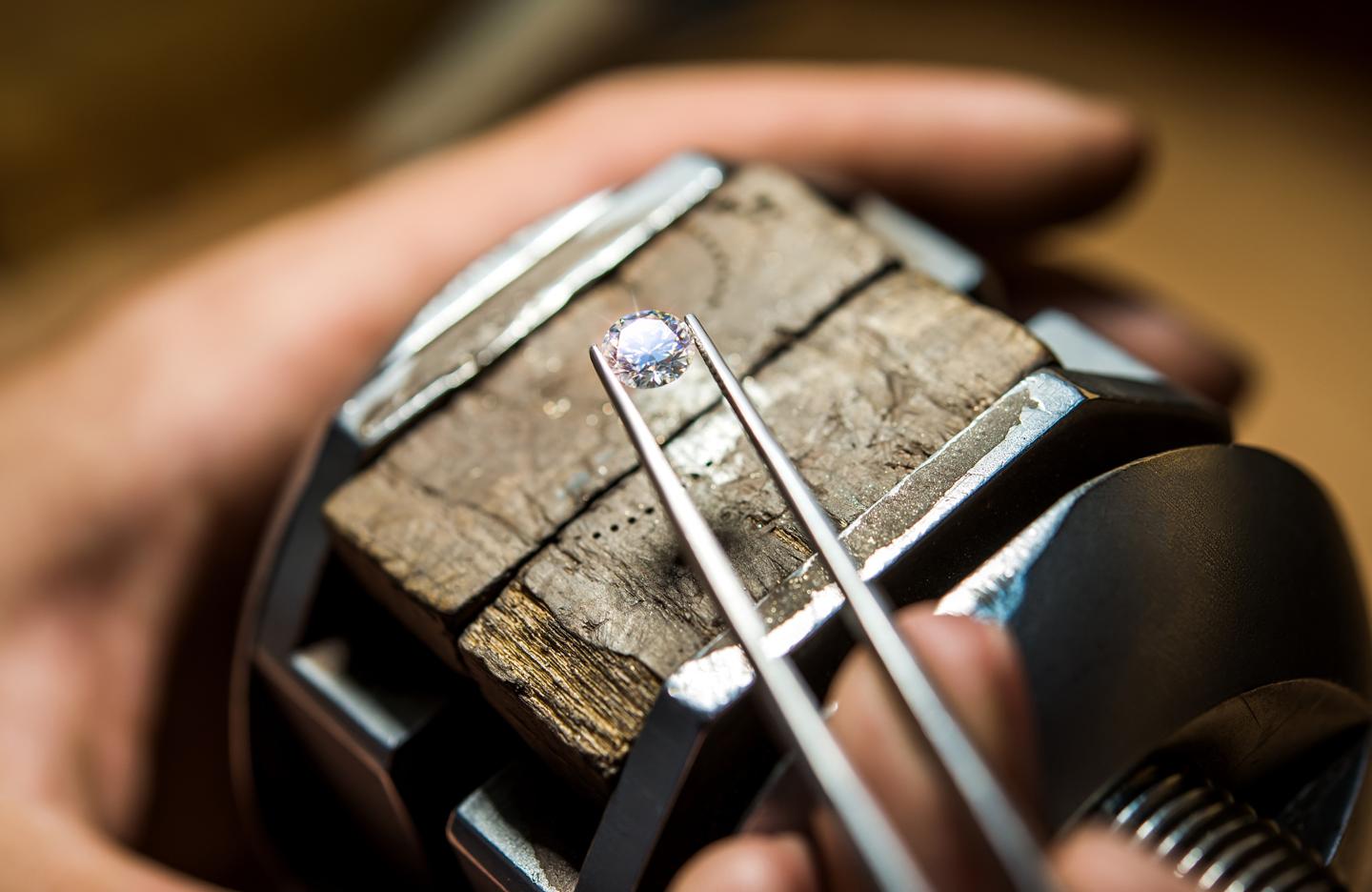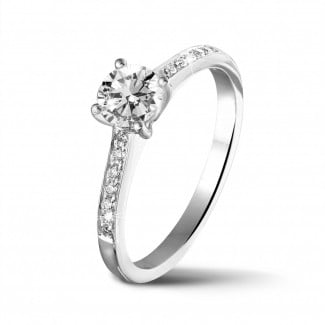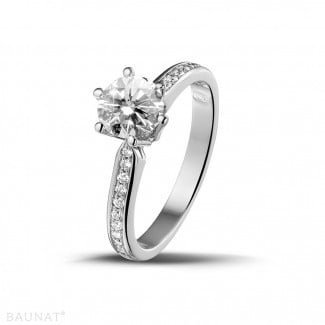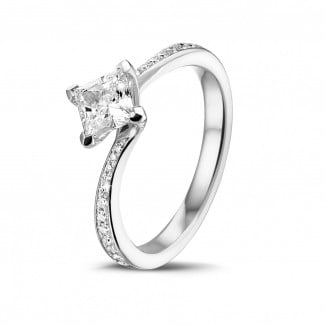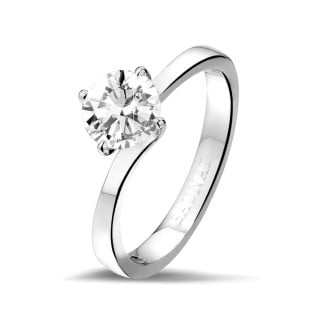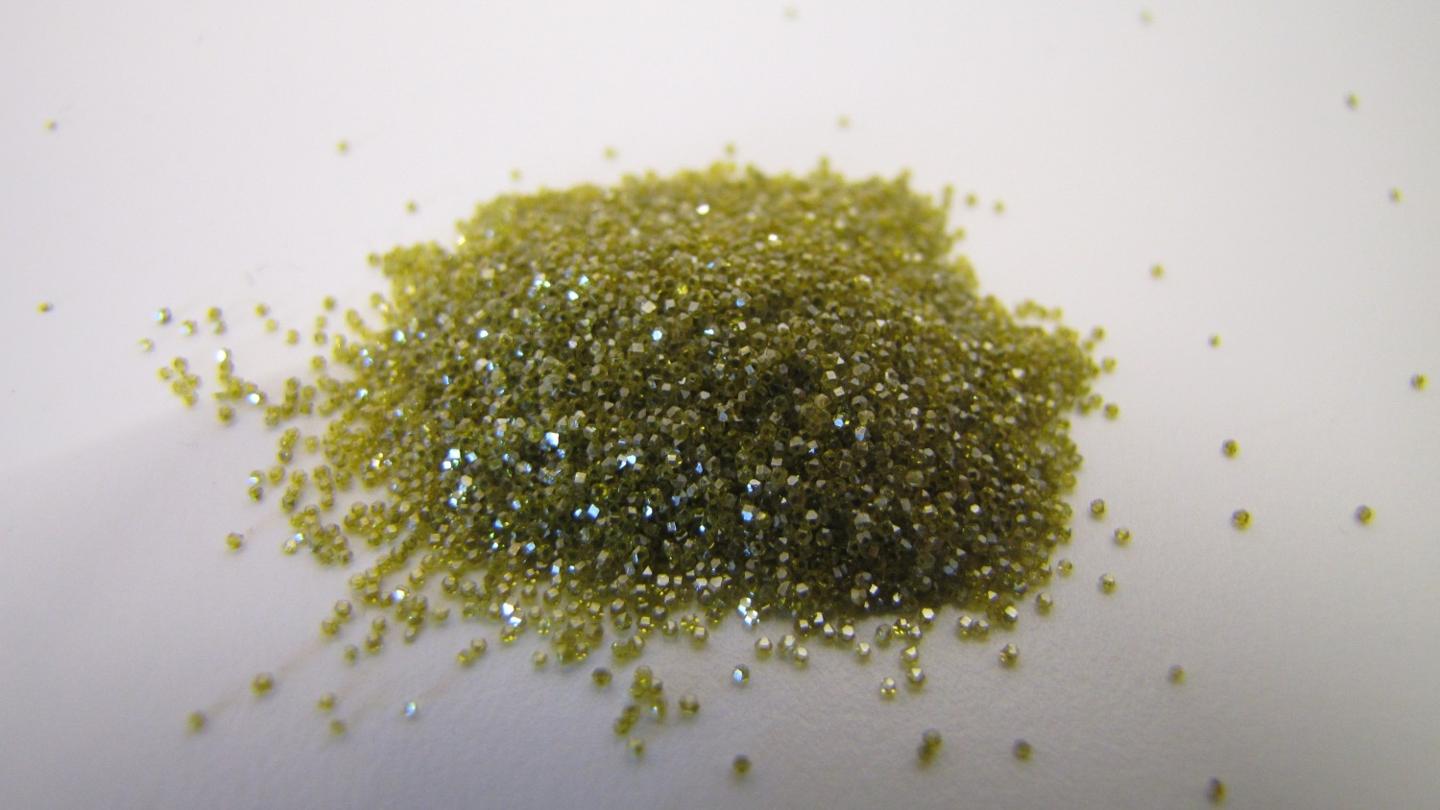Inspirational insights
Blogs in the spotlight
- How do I buy the perfect diamond ring?
- Choosing the perfect wedding ring
- Buying an engagement ring: expert tips & tricks
- Which earrings are the right ones for you?
- How to choose the perfect diamond bracelet?
- How to choose a necklace for ladies?
- Take your time in choosing your watch
- What's the right jewellery for each occasion?
- Why buy diamond jewellery online?
- A guide to building up your jewellery collection
- What types of precious metals are there?
- What types of precious metals are there?
- Jewellery trends and innovations in 2020
- What sorts of diamond setting are there?
Most viewed diamond jewels
.
Where does the story of De Beers diamond dealers begin?
So when was De Beers founded? Let’s go back to the year 1870 and the founding of De Beers diamonds. That year, 17-year-old Cecil Rhodes, an English vicar's son with a heart and lung condition, moved to South Africa. His brother, Herbert, owned a cotton farm in Natal, a British colony, where Cecil started work. The land was unsuitable for cotton, however, and the venture failed.
Fortunately, South Africa has more to offer than just cotton
The Rhodes brothers and their first steps in the diamond industry
He also bought the prospect at the Orange River, from two brothers, Johannes and Diederik De Beer. Although the De Beer brothers had found diamonds on their land, as devout Christians, they showed no interest in them. They did not want to be swept along by diamond fever and decided to sell their land.
The wide availability of diamonds caused overproduction and the diamond market collapsed. At that time, diamonds could be purchased for the same price as semi-precious stones such as topaz or turquoise. This worked out well for the De Beers marketing strategy. The company wanted to create scarcity to control the price of diamonds. Many mine owners could barely keep their heads above water, and Rhodes was able to take advantage of this.
Rhodes wanted to merge all companies in the South African diamond sector, in order to maintain a fixed, high price. He succeeded in 1888 and was made head of De Beers Consolidated Mines. In order to manage the supply better, he created other fake companies. Rhodes' monopoly caused quite a stir among the miners.
By 1890, De Beers controlled 90 percent of global diamond production. This also brought the company political power. When a large diamond was found a year later, the miners demanded a first refusal on purchasing it. The prime minister set up a commission, which favoured De Beers as the best buyer. No great surprise, since the prime minister was none other than Cecil Rhodes.
De Beers after the Rhodes brothers
The 4Cs were officially created in 1939 by De Beers and GIA. The 4 Cs stand for colour, carat weight, clarity and cut and is regarded as the standard for measuring the quality of a diamond.
A key part to the De Beers’ diamond history and influence on engagement ring culture began in 1947, when the slogan 'A diamond is forever' was born –– for an advertisement for diamond engagement rings. This led to strong sales growth because the diamond became the symbol of true love.

The History of De Beers’ Centenary Diamond
Carat weight, colour and clarity of the Centenary Diamond
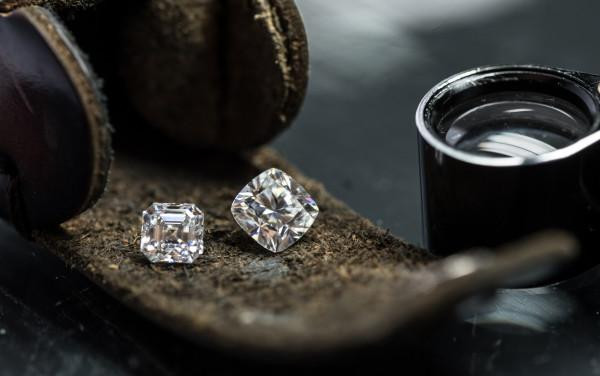
The impact De Beers has on the price of diamonds
The end of the De Beers era
With brands such as BAUNAT, you can be confident you're not buying synthetic diamonds, or even blood diamonds. BAUNAT buys its diamonds directly from the source, eliminating intermediaries and enabling us to offer jewellery online 30% to 50% cheaper.
Why buy diamonds from BAUNAT?
We also offer a designed to order service, starting out from a budget of €4,000. Working with our experts you can design diamond jewellery entirely how you want it. If you have any questions about our jewellery or about certain styles and trends, our experts are always on hand to give advice.
Find out about other famous diamonds
Frequently asked Questions
Beers
De Beers is the company that single-handedly made the diamond industry what it is today. De Beers was founded by Cecil Rhodes, who also founded the state of Rhodesia which later became Zambia and Zimbabwe. The Rhodes scholarship is also named after him, and funded by his estate. De Beers has mines in Botswana, South-Africa, Namibia and Canada. Because of this, the company practically has a monopoly on diamonds and can truly be called the largest diamond corporation in the world. For more information, click here.
What is the N°1 diamond group?
We can't talk about diamonds without talking about De Beers, the company that single-handedly made the diamond industry what it is today. De Beers was founded by Cecil Rhodes, who also founded the state of Rhodesia which later became Zambia and Zimbabwe. The Rhodes scholarship is also named after him, and funded by his estate.
Rhodes started by renting water pumps to miners during a diamond rush in 1867 at Kimberley, South Africa. He expanded into mines and about twenty years later became the sole owner of all diamond mining operations in the country.
Rhodes built De Beers into a diamond group. De Beers mines diamonds, then handle their sales and distribution through various entities (Today, it's known as the Diamond Trading Company, while previously it was simply called "the syndicate” and the CSO or Central Selling Organization.)
If you want to buy diamonds from De Beers, you've got to play by their rules: diamond are sold in events known as "sights." There are 10 sights held each year, and to buy, you have to be a sight holder (these are usually diamond dealers whose business is to have the stones cut and polished and then resold at diamond clearing centers of Antwerp, New York, and Tel Aviv).
What is the origin of the diamonds in Antwerp?
- What route do diamonds travel?
- Where are they most often mined?
- Where does the importance of a diamond engagement ring come from?
The mysterious appearance of diamonds should not mean that their origins need to stay a secret too. Approximately 80% of all rough diamonds in the world pass through Antwerp. But where in the world do they come from? And how did the tradition of adding diamonds to an engagement ring arise?
What route do diamonds travel?
Diamonds have a long way to go before they can shine in your jewellery. In order to mine 1 carat, or 0.2 grams, of diamond, around 250 tonnes of earth must be removed. Are you interested in the diamond pipeline? Discover how a rough diamond becomes a beautiful jewel by watching this video.
Where are they most often mined?
Did you know that the origin of diamonds lies in India? Now they are mined all over the world, in expansive mines in Australia, Africa and Canada among others. Even though mine exploitation used to be very lucrative, many diamond mines have started to dry up these past years. For this reason, the diamond industry is investigating other options, such as diamond mines in Antarctica or mining undersea. The actual diamond trade will not notice much difference, however. Rough diamonds will inescapably wind up in Antwerp.
The rough diamonds that arrive in Antwerp are without exception mined and traded in an ethically responsible way. This is achieved thanks to the international Kimberley process.
Where does the importance of a diamond engagement ring come from?
But where did the popularity of diamond engagement rings come from? Starting from 1948 almost every bride coveted a diamond ring. We have the famous marketing campaign ‘Diamonds are a girl’s best friend’ from De Beers to thank for that. This company is still the market leader when it comes to diamond mines, with direct involvement in over 19 mining activities. They produce approximately half of the world’s supply of diamonds. There is thus a very high chance that your diamond originated from one of these mines.
Would you like to know more about the diamonds that BAUNAT uses in its jewellery? Or do you have any other question? Ask the BAUNAT diamond experts for advice and discover everything you wish to know.

Fabienne Rauw
- BAUNAT Antwerp
- My Linkedin profile - Contact me
 Design collections
Design collections Stackable Rings
Stackable Rings Ruby, sapphire & emerald
Ruby, sapphire & emerald Bestsellers
Bestsellers New arrivals
New arrivals Watches
Watches Cufflinks
Cufflinks Rings for men
Rings for men Diamond
Diamond Sapphire
Sapphire Ruby
Ruby Emerald
Emerald Yellow diamond
Yellow diamond Black diamond
Black diamond
 Diamond rings
Diamond rings Sapphire rings
Sapphire rings Ruby rings
Ruby rings Emerald rings
Emerald rings Yellow diamond rings
Yellow diamond rings Black diamond rings
Black diamond rings
 Stackable rings
Stackable rings Cocktail rings
Cocktail rings Rings for men
Rings for men Bestsellers
Bestsellers Diamond rings
Diamond rings Sapphire rings
Sapphire rings Ruby rings
Ruby rings Emerald rings
Emerald rings Yellow diamond rings
Yellow diamond rings Black diamond rings
Black diamond rings
 Solitaire
Solitaire Dangle
Dangle Diamond earrings
Diamond earrings Sapphire earrings
Sapphire earrings Yellow diamond earrings
Yellow diamond earrings Black diamond earrings
Black diamond earrings
 Solitaire
Solitaire 3 stones
3 stones Halo
Halo Gradient
Gradient Diamond necklaces
Diamond necklaces Sapphire necklaces
Sapphire necklaces Yellow diamond necklaces
Yellow diamond necklaces Black diamond necklaces
Black diamond necklaces
 Gradient
Gradient White gold
White gold Yellow gold
Yellow gold Red gold
Red gold Platinum
Platinum Diamond bracelets
Diamond bracelets Yellow diamond bracelets
Yellow diamond bracelets Black diamond bracelets
Black diamond bracelets
 View watches
View watches View watches
View watches Swiss Made
Swiss Made Swiss Collection limited edition
Swiss Collection limited edition Manufacturing process
Manufacturing process Manual or Automatic watch
Manual or Automatic watch Sapphire or mineral glass
Sapphire or mineral glass
 Rings
Rings Necklaces
Necklaces Bracelets
Bracelets Sapphire
Sapphire
 Engagement rings
Engagement rings Earrings
Earrings Necklaces
Necklaces Bracelets
Bracelets
